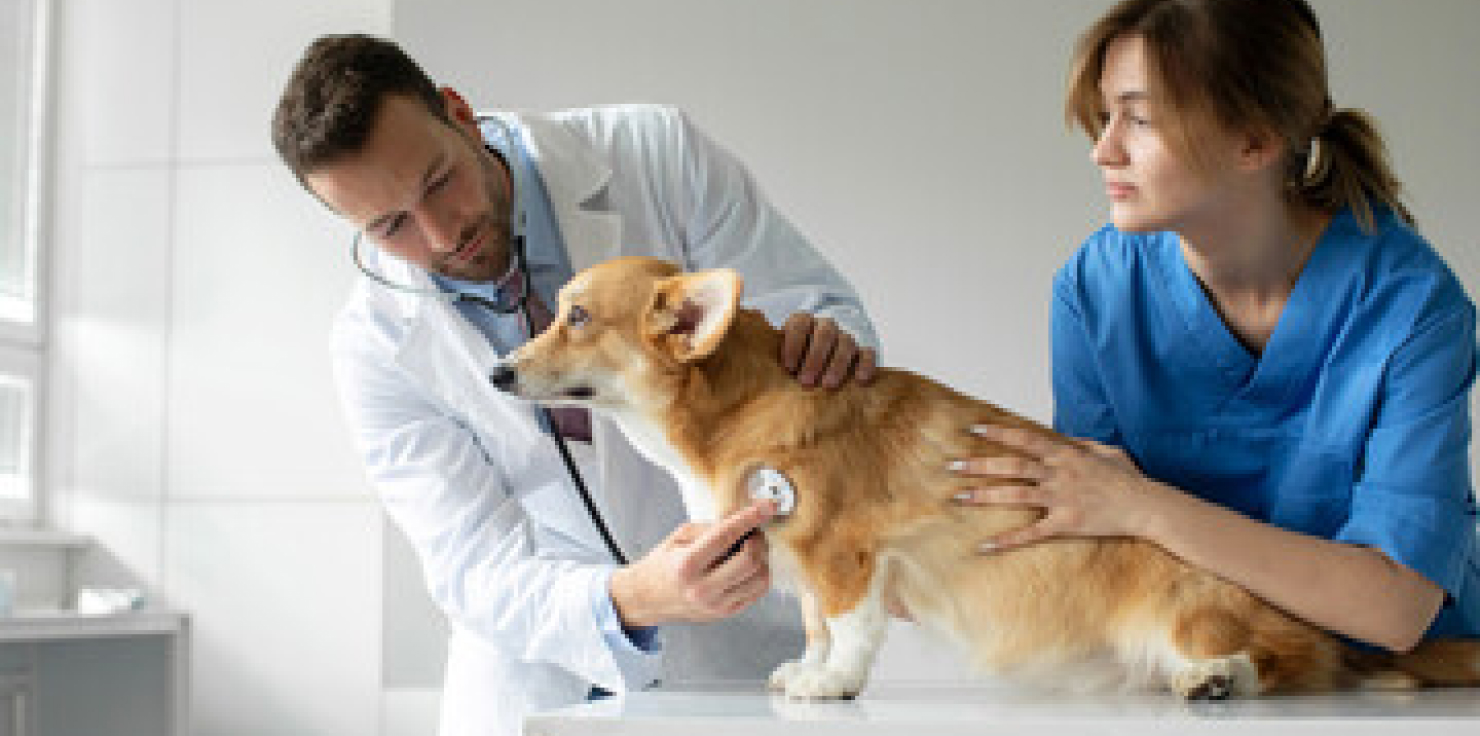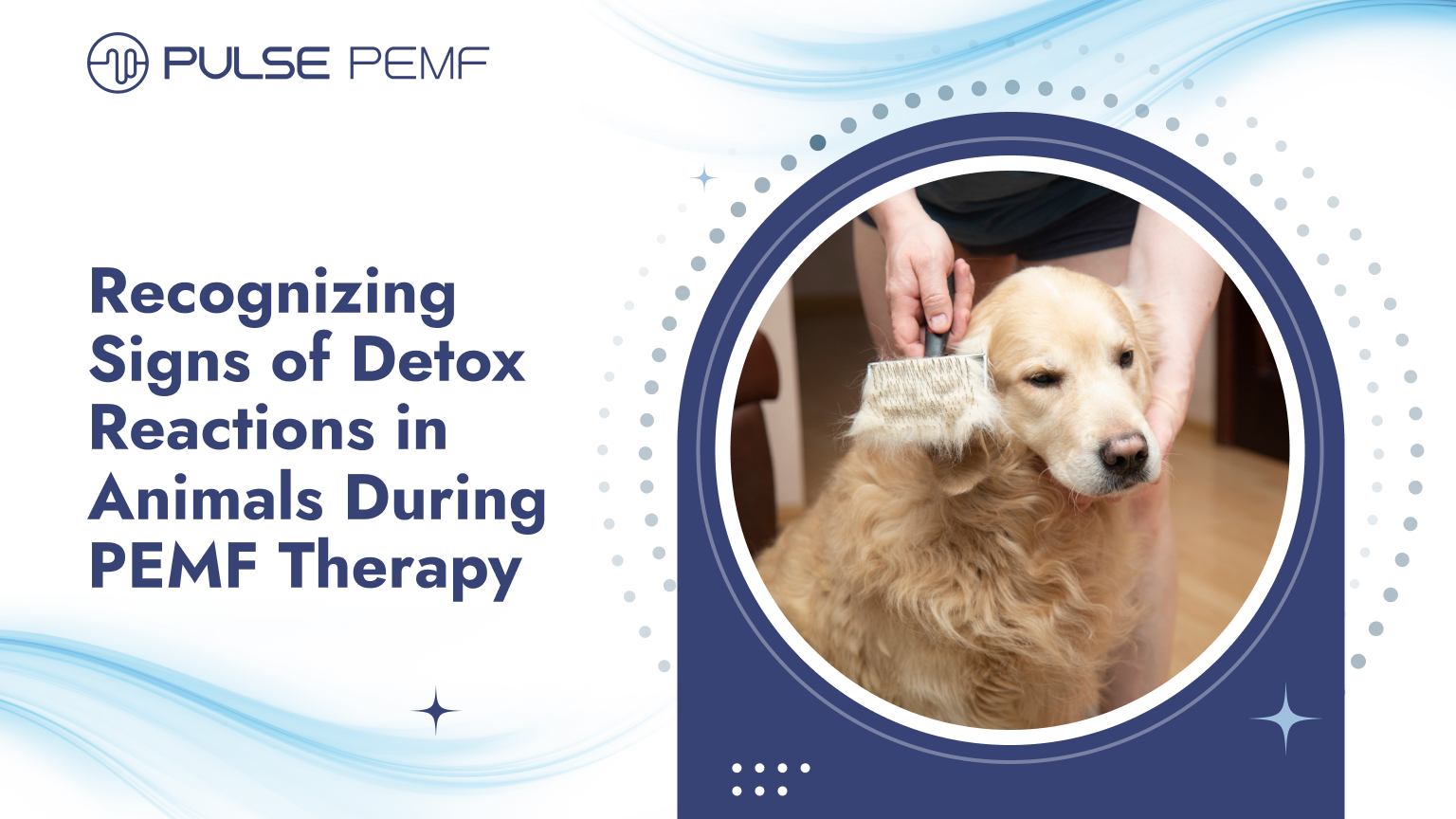Ever wonder if your furry friend is feeling the benefits of PEMF? PEMF, pulsed electromagnetic field therapy, uses gentle pulses of energy to support your pet’s overall well-being.
PEMF can improve overall cellular function, potentially leading to enhanced detoxification. But as the body gets rid of built-up toxins, you might notice some detox reactions in your pet.
This blog will explore what these detox reactions look like in animals and how to navigate them so you can help your pet feel their best!
Common Detox Reactions in Animals
As your pet’s body releases toxins during PEMF, you might notice some temporary changes. These are completely normal and a sign that their system is cleansing itself! Here’s a breakdown of some common detox reactions:
Physical Signs
- Increased urination: This helps flush out toxins through the kidneys.
- Diarrhea or loose stools: The body might be working to eliminate built-up toxins through the bowels.
- Changes in coat and skin condition: Sometimes, old skin cells or irritants can be released, leading to temporary shedding or itchiness.
Behavioral Changes

- Lethargy or increased sleep: This is the body’s way of resting and recovering during the detoxification process.
- Temporary changes in appetite: Your pet might lose interest in food for a short period or seem extra hungry.
- Unusual behavior or restlessness: Some animals might experience temporary mood swings as their body adjusts.
Addressing Underlying Conditions
It’s important to remember that some of these signs can also be symptoms of pre-existing health conditions. If you’re concerned about any changes in your pet’s behavior or well-being, always consult your veterinarian. They can help you determine if these are normal detox reactions or something else entirely.
Differentiating Detox Reactions from Other Conditions
While detox reactions are generally temporary and mild, it’s important to know when to seek veterinary advice. Here’s how to tell the difference:
When to Seek Veterinary Advice

- Severity and Duration: If any detox reactions become severe (excessive vomiting, diarrhea, or lethargy) or persist for more than a few days, consult your veterinarian.
- New Symptoms: If your pet experiences any new symptoms not listed as common detox reactions, it’s best to err on the side of caution and schedule a vet visit.
- Pre-existing Conditions: If your pet has any underlying health issues, closely monitor their reactions and discuss them with your veterinarian.
Monitoring Detox Reactions
Keeping track of your pet’s detox reactions can help you and your vet determine if everything’s progressing normally. Create a simple log where you can note down the date, type of detox reaction, and its severity. Observing and recording symptoms over time will give you a clearer picture of what’s happening and help you discuss it with your veterinarian effectively.
Managing Detox Reactions During PEMF
These tips can help your pet navigate detox reactions smoothly!
Adjusting PEMF Sessions
- Listen to your pet: If your pet experiences strong detox reactions, you might need to adjust their PEMF sessions. This could involve reducing the frequency (number of sessions per week) or shortening the duration of each session.
- Consult a specialist: A Pulse PEMF professional can advise you on the best approach for your pet based on their individual needs and reaction to the therapy.
Supporting Your Pet Through Detox
- Hydration is key: Detoxification can lead to increased water loss, so ensure your pet has access to plenty of fresh, clean water throughout the day.
- Fuel their body: Provide your pet with a balanced diet rich in essential nutrients to support their body’s natural detoxification processes.
- Calm and comfortable: Create a stress-free environment for your pet during this time. Offer them plenty of rest and minimize disruptions to their routine.
Additional Detox Support (with veterinary approval)

- Gentle exercise: Light walks or playtime can help stimulate lymphatic drainage and elimination of toxins.
- Natural remedies: Consider consulting your veterinarian about incorporating pet-safe supplements or natural remedies to further support your pet’s detoxification process.
FAQs About Detox Reactions in Animals During PEMF
Q: What are the typical detox reactions to expect?
A: Common detox reactions can include physical signs like increased urination, diarrhea, or temporary changes in coat and skin. Behaviorally, your pet might experience lethargy, temporary appetite changes, or unusual behavior.
Q: How long do detox reactions usually last?
A: Detox reactions are generally mild and temporary, typically lasting for a few days. However, this can vary depending on your pet’s individual health and the severity of toxin buildup.
Q: What can I do to help my pet during detox?
A: There are several ways to support your pet during detox:
- Ensure they have plenty of fresh water to stay hydrated.
- Provide a balanced diet rich in nutrients.
- Create a calm and comfortable environment for rest.
- Consider gentle exercise to promote elimination.
- Monitor their reactions and keep a log for your veterinarian.
Remember: If any reactions become severe, persist for a long time, or you have any concerns, always consult your veterinarian.
Conclusion
PEMF can be a wonderful way to support your pet’s overall health and well-being. By understanding detox reactions and how to manage them, you can help your furry friend have a positive experience. If you’d like to learn more about PEMF for pets and how Pulse can help you get started, contact us today! Our team is here to answer your questions and guide you on this journey towards optimal pet wellness.












